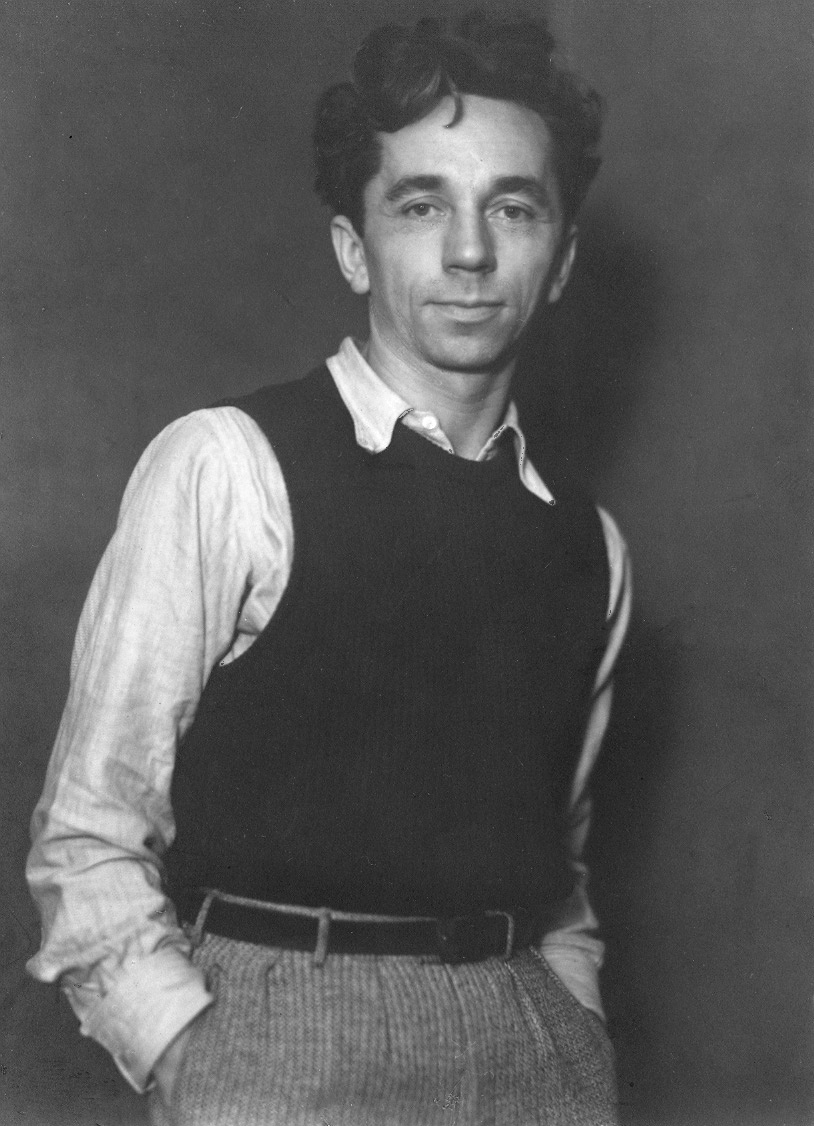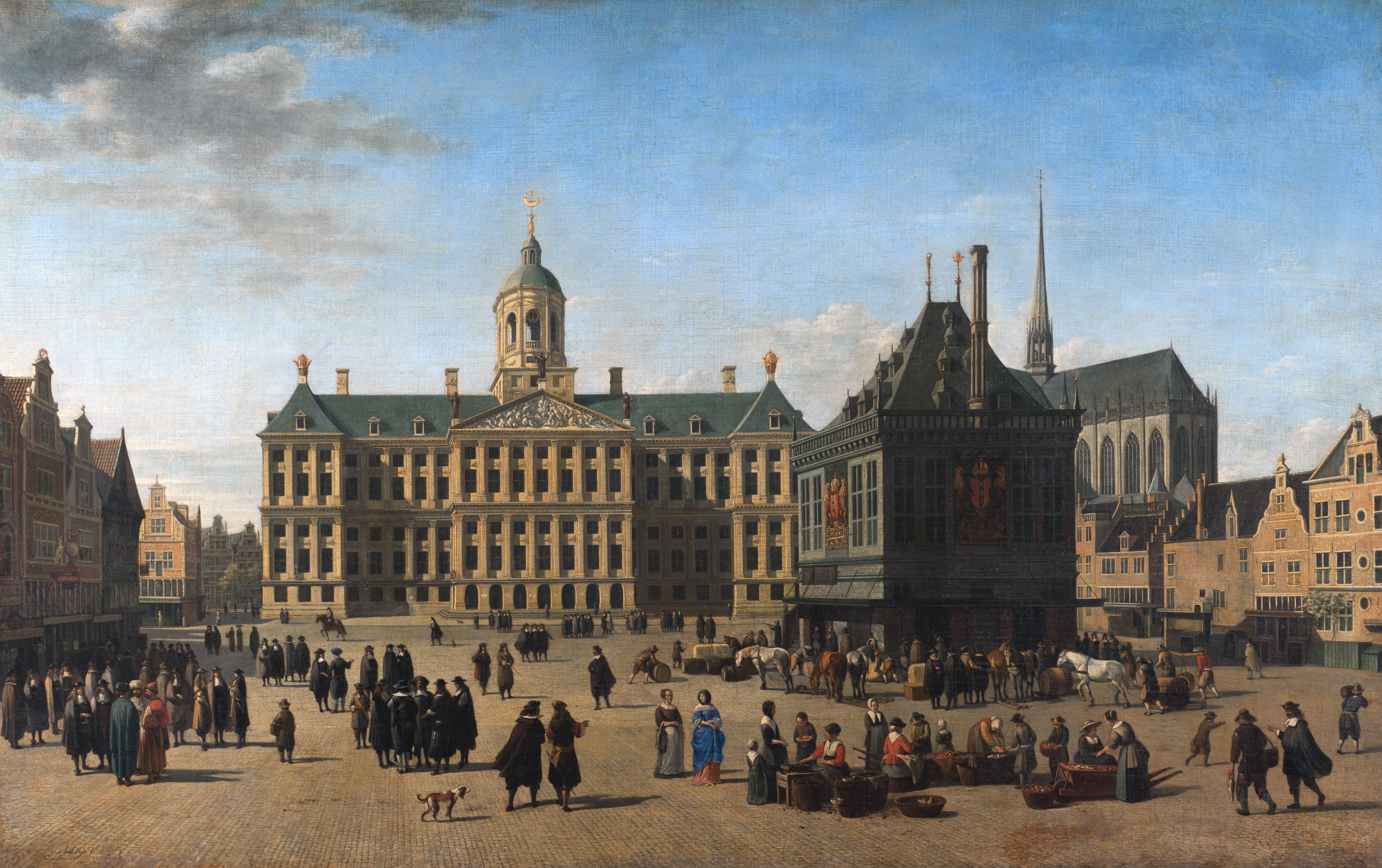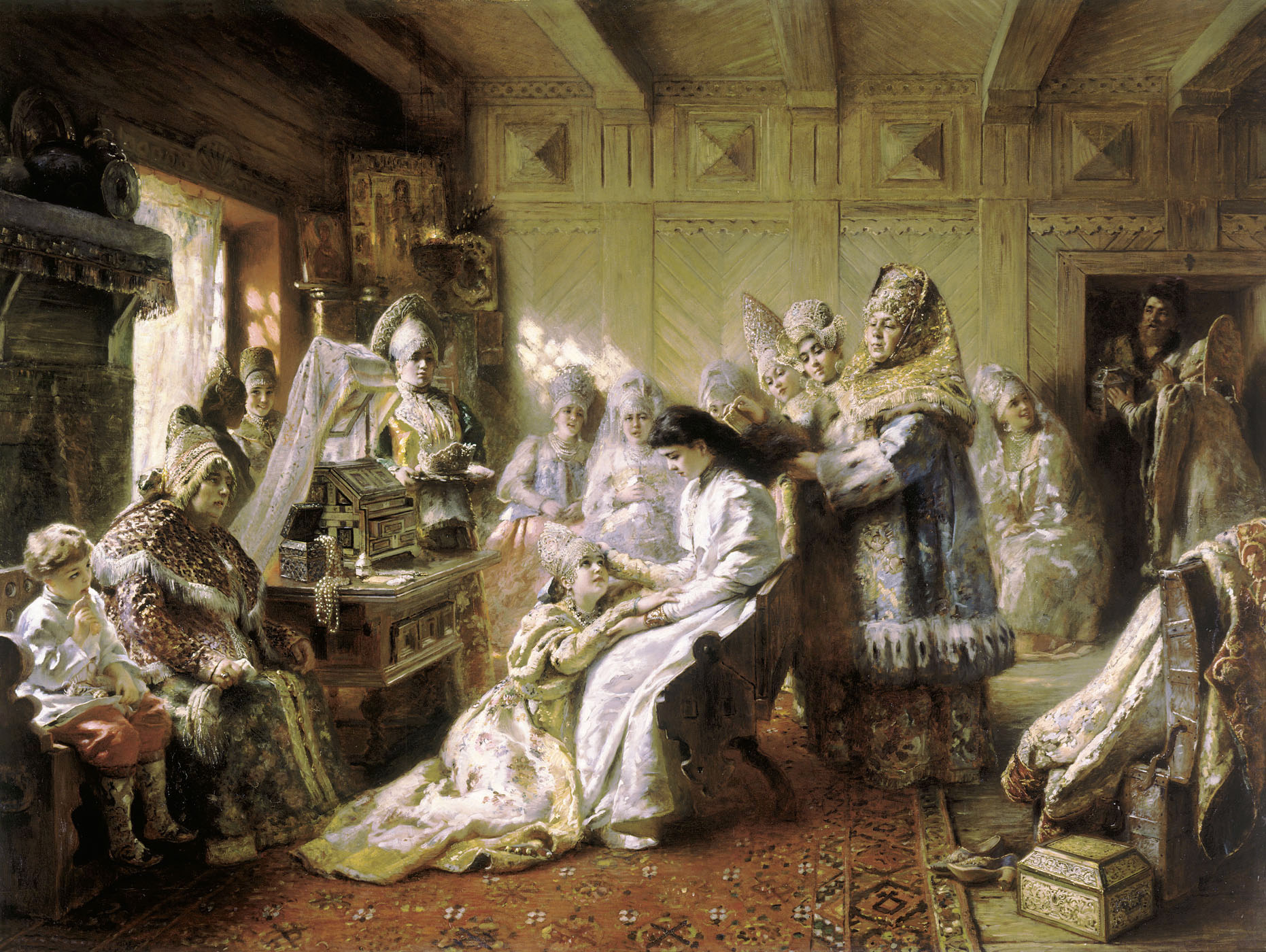|
Karl Rabus
Karl Rabus (Russian: Карл Иванович Рабус (11 May 1800, St. Petersburg - 14 January 1857, Moscow) was a Russian architectural painter and art teacher. Biography His father died when Karl was seven. At the age of only ten, he was sent to study at the Imperial Academy of Arts; remaining there until 1821, when he received a small gold medal and a second-degree certificate.S. N. Kondakov, Anniversary reference book of the Imperial Academy of Arts. 1764-1914'. Vol.2 (1915), St. Petersburg: R. Golike and A. Vilborg Partnership. p.163 Crimea became one of his favorite places to paint. There, he created the works necessary for him to obtain the title of "Academician" by painting landmarks in a manner that would later become known as en plein aire. He was awarded the title in 1827 for his canvas depicting a villa in Gurzuf, built by the Duc de Richelieu. He also received praise for his view of Balaklava. From Crimea, he went to Odessa, then spent some time in Istanbul.A. ... [...More Info...] [...Related Items...] OR: [Wikipedia] [Google] [Baidu] |
Carl Rabus
Carl Johann Rabus (May 30, 1898 – July 28, 1983) was a German expressionist artist and painter who was persecuted by the Nazis. Biography Rabus was born in Kempten, and studied under Angelo Jank at the academy in Munich. After various art exhibitions organized by Hans Goltz in Munich and by Der Sturm in Berlin Rabus worked as a book- and art illustrator in Berlin from 1923 till 1927. His works were published by several magazines like ''Eulenspiegel'', ''Der Orchideengarten'' and '' Jugend''. Along with contemporaries including Jacob Steinhardt, , Heinrich Richter-Berlin, and Conrad Felixmüller, Rabus "revived the techniques of woodcut and wood-engraving synonymous with the ''Die Brücke'' circle of artists and German Expressionism".Glenn Sujo, ''Legacies of Silence: The Visual Arts and Holocaust Memory'' (2001), p. 27. Upon the Nazi takeover in Germany in 1933, Rabus moved to Vienna, Austria, where he met his wife-to-be, Jewish photographer Erna Adler. However, they soon h ... [...More Info...] [...Related Items...] OR: [Wikipedia] [Google] [Baidu] |
Color Blindness
Color blindness or color vision deficiency (CVD) is the decreased ability to color vision, see color or differences in color. It can impair tasks such as selecting ripe fruit, choosing clothing, and reading traffic lights. Color blindness may make some academic activities more difficult. However, issues are generally minor, and the colorblind automatically develop adaptations and coping mechanisms. People with achromatopsia, total color blindness (achromatopsia) may also be Hemeralopia, uncomfortable in bright environments and have visual impairment, decreased visual acuity. The most common cause of color blindness is an Heredity, inherited problem or variation in the functionality of one or more of the three classes of cone cells in the retina, which mediate color vision. The most common form is caused by a genetic disorder called congenital red–green color blindness. Males are more likely to be color blind than females, because the genes responsible for the most common for ... [...More Info...] [...Related Items...] OR: [Wikipedia] [Google] [Baidu] |
Imperial Academy Of Arts Alumni
Imperial is that which relates to an empire, emperor, or imperialism. Imperial or The Imperial may also refer to: Places United States * Imperial, California * Imperial, Missouri * Imperial, Nebraska * Imperial, Pennsylvania * Imperial, Texas * Imperial, West Virginia * Imperial, Virginia * Imperial County, California * Imperial Valley, California * Imperial Beach, California Elsewhere * Imperial (Madrid), an administrative neighborhood in Spain * Imperial, Saskatchewan, a town in Canada Buildings * Imperial Apartments, a building in Brooklyn, New York * Imperial City, Huế, a palace in Huế, Vietnam * Imperial Palace (other) * Imperial Towers, a group of lighthouses on Lake Huron, Canada * The Imperial (Mumbai), a skyscraper apartment complex in India Animals and plants * ''Cheritra'' or imperial, a genus of butterfly Architecture, design, and fashion * Imperial, a luggage case for the top of a coach * Imperial, the top, roof or second-storey compartment of a coa ... [...More Info...] [...Related Items...] OR: [Wikipedia] [Google] [Baidu] |
Cityscape Artists
In the visual arts, a cityscape (urban landscape) is an artistic representation, such as a painting, drawing, print or photograph, of the physical aspects of a city or urban area. It is the urban equivalent of a landscape. ''Townscape'' is roughly synonymous with ''cityscape,'' though it implies the same difference in urban size and density (and even modernity) implicit in the difference between the words ''city'' and ''town''. In urban design the terms refer to the configuration of built forms and interstitial space. History of cityscapes in art From the first century A.D. dates a fresco at the Baths of Trajan in Rome depicting a bird's eye view of an ancient city.Eugenio la Rocca: "The Newly Discovered City Fresco from Trajan's Baths, Rome." ''Imago Mundi'' Vol. 53 (2001), pp. 121–124. In the Middle Ages, cityscapes appeared as a background for portraits and biblical themes. From the 16th up to the 18th century numerous copperplate prints and etchings were made showi ... [...More Info...] [...Related Items...] OR: [Wikipedia] [Google] [Baidu] |
Court Painters
A court is any person or institution, often as a government institution, with the authority to adjudicate legal disputes between parties and carry out the administration of justice in civil, criminal, and administrative matters in accordance with the rule of law. In both common law and civil law legal systems, courts are the central means for dispute resolution, and it is generally understood that all people have an ability to bring their claims before a court. Similarly, the rights of those accused of a crime include the right to present a defense before a court. The system of courts that interprets and applies the law is collectively known as the judiciary. The place where a court sits is known as a venue. The room where court proceedings occur is known as a courtroom, and the building as a courthouse; court facilities range from simple and very small facilities in rural communities to large complex facilities in urban communities. The practical authority given to the c ... [...More Info...] [...Related Items...] OR: [Wikipedia] [Google] [Baidu] |
Russian Painters
This is a list of Russians artists. In this context, the term "Russian" covers the Russian Federation, Soviet Union, Russian Empire, Tsardom of Russia and Grand Duchy of Moscow, including ethnic Russians and people of other ethnicities living in Russia. This list also includes those who were born in Russia but later emigrated, and those who were born elsewhere but immigrated to the country and/or worked there for a significant period of time. Alphabetical list __NOTOC__ A B C D E F G H I J K L M N O P R S T U V W Y Z See also * Russian Academy of Arts * List of 19th-century Russian painters * List of 20th-century Russian painters * List of Russian landscape painters * List of painters of Saint Petersburg Union of Artists * :Russian artists * List of Russian architects * List of Russian inventors * List of Russian explorers * List of Russian language writers * Russian culture {{Asian artists Lists of R ... [...More Info...] [...Related Items...] OR: [Wikipedia] [Google] [Baidu] |
1857 Deaths
Events January–March * January 1 – The biggest Estonian newspaper, ''Postimees'', is established by Johann Voldemar Jannsen. * January 7 – The partly French-owned London General Omnibus Company begins operating. * January 9 – The 7.9 Fort Tejon earthquake shakes Central and Southern California, with a maximum Mercalli intensity of IX (''Violent''). * January 24 – The University of Calcutta is established in Calcutta, as the first multidisciplinary modern university in South Asia. The University of Bombay is also established in Bombay, British India, this year. * February 3 – The National Deaf Mute College (later renamed Gallaudet University) is established in Washington, D.C., becoming the first school for the advanced education of the deaf. * February 5 – The Federal Constitution of the United Mexican States is promulgated. * March – The Austrian garrison leaves Bucharest. * March 3 ** France and the United Kingdom f ... [...More Info...] [...Related Items...] OR: [Wikipedia] [Google] [Baidu] |
1800 Births
Eighteen or 18 may refer to: * 18 (number), the natural number following 17 and preceding 19 * one of the years 18 BC, AD 18, 1918, 2018 Film, television and entertainment * 18 (film), ''18'' (film), a 1993 Taiwanese experimental film based on the short story ''God's Dice'' * Eighteen (film), ''Eighteen'' (film), a 2005 Canadian dramatic feature film * 18 (British Board of Film Classification), a film rating in the United Kingdom, also used in Ireland by the Irish Film Classification Office * 18 (Dragon Ball), 18 (''Dragon Ball''), a character in the ''Dragon Ball'' franchise * "Eighteen", a 2006 episode of the animated television series ''12 oz. Mouse'' Music Albums * 18 (Moby album), ''18'' (Moby album), 2002 * 18 (Nana Kitade album), ''18'' (Nana Kitade album), 2005 * ''18...'', 2009 debut album by G.E.M. Songs * 18 (5 Seconds of Summer song), "18" (5 Seconds of Summer song), from their 2014 eponymous debut album * 18 (One Direction song), "18" (One Direction song), from the ... [...More Info...] [...Related Items...] OR: [Wikipedia] [Google] [Baidu] |
Alexis Of Russia
Aleksey Mikhaylovich ( rus, Алексе́й Миха́йлович, p=ɐlʲɪkˈsʲej mʲɪˈxajləvʲɪtɕ; – ) was the Tsar of Russia from 1645 until his death in 1676. While finding success in foreign affairs, his reign saw several wars with Iran, Poland and Sweden, as well as internal instabilities such as the Salt Riot in Moscow and the Cossack revolt of Stenka Razin in southern Russia. In religious matters, he sided closely with Patriarch Nikon during the schism in the Russian Orthodox Church which saw unpopular liturgical reforms. He was the first tsar to sign laws on his own authority and his council passed the Sobornoye Ulozheniye of 1649 which strengthened the bonds between autocracy and the lower nobility, at the time of his death Russia spanned almost . Early life and reign Born in Moscow on , the son of Tsar Michael and Eudoxia Streshneva, the sixteen-year-old Alexis acceded to the throne after his father's death on 12 July 1645. In August, the Tsar's mother ... [...More Info...] [...Related Items...] OR: [Wikipedia] [Google] [Baidu] |
Terem (Russia)
The "terem" (Russian: Терем) refers to the separate living quarters occupied by elite women of the Grand Duchy of Moscow and Tsardom of Russia. Also, the upper story of a home or castle, often with a pitched roof. More broadly, the term is used by historians to discuss the elite social practice of female seclusion that reached its height in the seventeenth century. Royal or noble women were not only confined to separate quarters, but were also prevented from socialization with men outside their immediate family, and were shielded from the public eye in closed carriages or heavily concealing clothing. The word is not to be confused with the Terem Palace in Moscow, an extended part of the Grand Kremlin Palace, which was not occupied exclusively by women. Etymology Although the origins of the practice are still a matter of debate among historians, it is generally believed that the word "terem" comes from the Proto-Slavic root ''*term'' (dwelling). Its usage in a Russian cont ... [...More Info...] [...Related Items...] OR: [Wikipedia] [Google] [Baidu] |
Kremlin
The Kremlin ( rus, Московский Кремль, r=Moskovskiy Kreml', p=ˈmɐˈskofskʲɪj krʲemlʲ, t=Moscow Kremlin) is a fortified complex in the center of Moscow founded by the Rurik dynasty, Rurik dynasty. It is the best known of the Kremlin (fortification), kremlins (Russian citadels), and includes five palaces, four cathedrals, and the enclosing Kremlin Wall with Kremlin towers. In addition, within this complex is the Grand Kremlin Palace that was formerly the Tsar's Moscow residence. The complex now serves as the official residence of the President of Russia, President of the Russian Federation and as a Moscow Kremlin Museums, museum with almost 3 million visitors in 2017. The Kremlin overlooks the Moskva River to the south, Saint Basil's Cathedral and Red Square to the east, and the Alexander Garden to the west. The name "''Kremlin''" means "fortress inside a city", and is often also used metonymically to refer to the Government of Russia, government of the Russi ... [...More Info...] [...Related Items...] OR: [Wikipedia] [Google] [Baidu] |
Spasskaya Tower
The Spasskaya Tower ( rus, Спасская башня, Spasskaya Bashnya), translated as 'Saviour Tower', is the main tower on the eastern wall of the Moscow Kremlin which overlooks Red Square. History The Spasskaya Tower was built in 1491 by the Italian architect Pietro Antonio Solari. Initially, it was named the Frolovskaya Tower after the Church of Frol and Lavr in the Kremlin, which is no longer there. The tower's modern name comes from the icon of 'Spas Nerukotvorny' (russian: Спас Нерукотворный) translated as 'The Saviour Not Made by Hands', which was placed above the gates on the inside wall in 1658 and removed in 1917. The tower is also named for the wall-painted icon of 'Spas Smolensky' (russian: Спас Смоленский) translated as 'Smolensky Saviour', which was created in the 16th century on the outside wall of the tower, plastered over in 1937, but reopened and restored in 2010. The Spasskaya Tower was the first tower of the many Moscow Krem ... [...More Info...] [...Related Items...] OR: [Wikipedia] [Google] [Baidu] |








